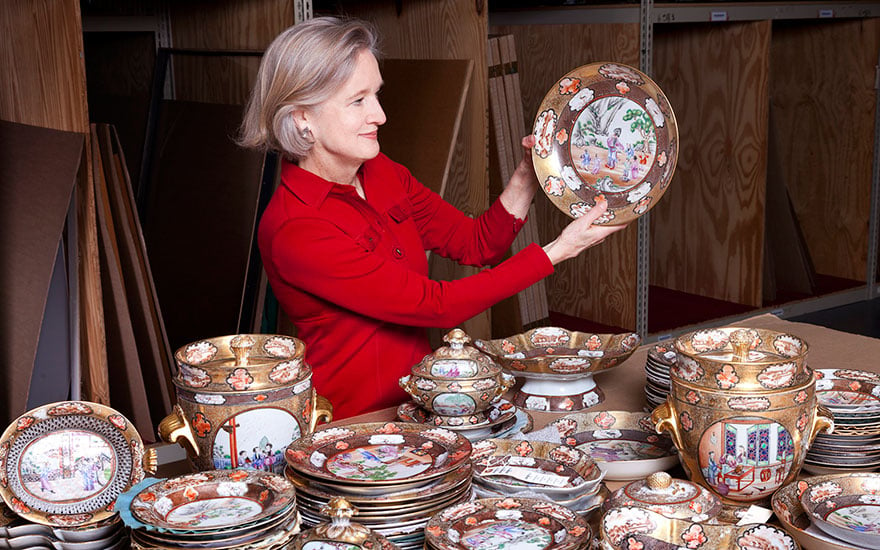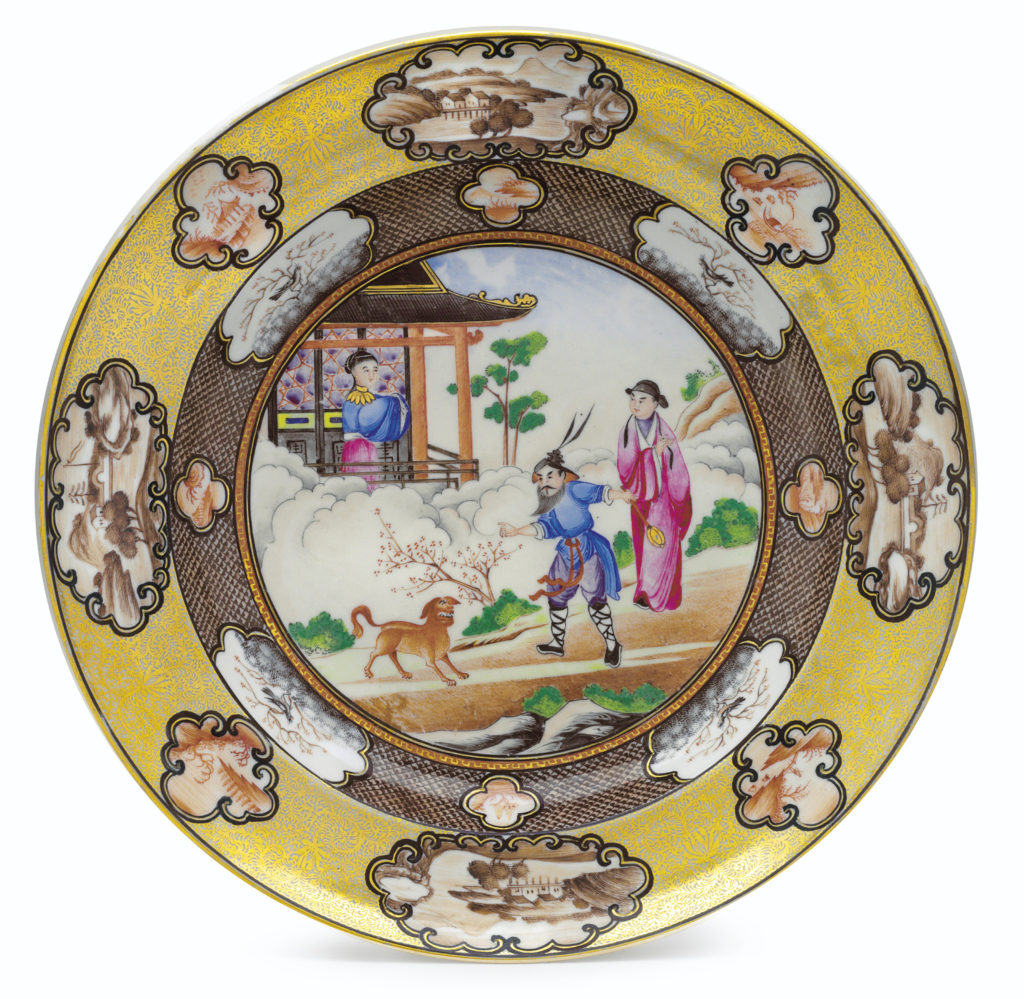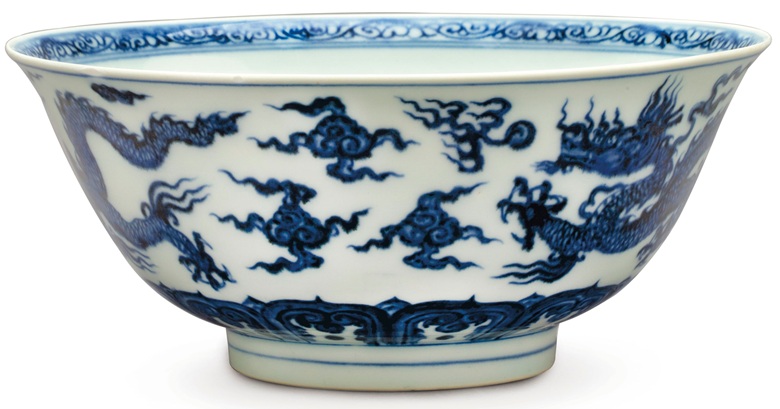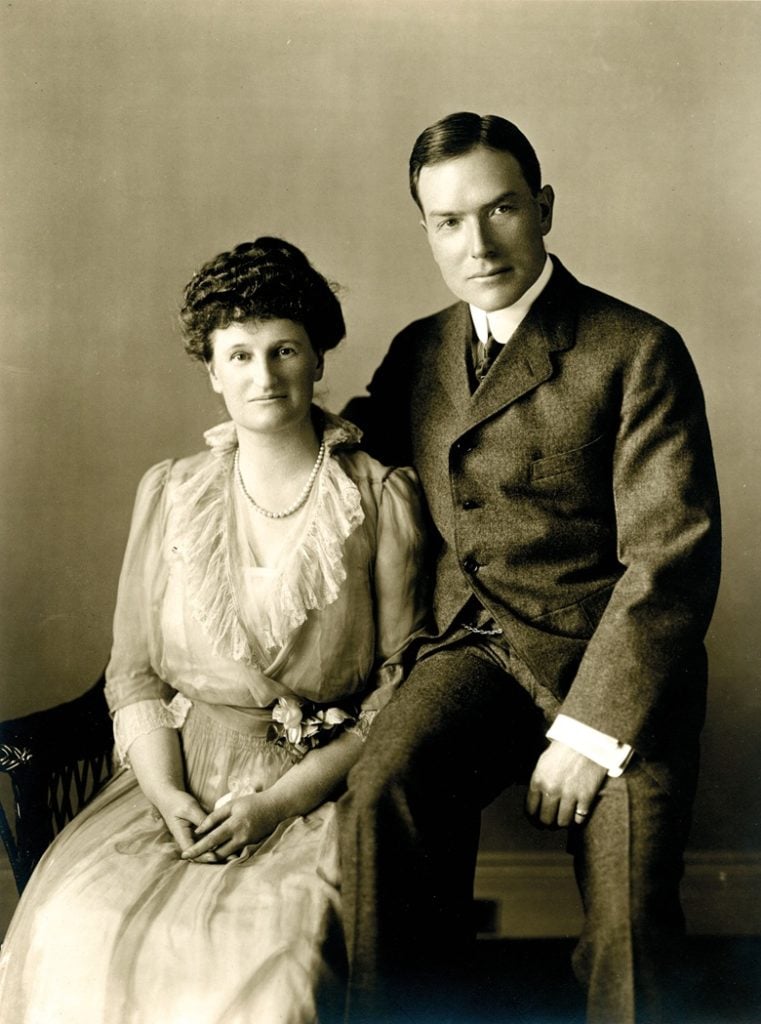Art World
How the Rockefellers’ Art Dealer Forever Changed the Way the West Collects Asian Art
Yamanaka Sadajirō introduced the Rockefellers to a new appreciation of Asian art and design.

Yamanaka Sadajirō introduced the Rockefellers to a new appreciation of Asian art and design.

Erica Eisen

Next month, New York’s Rockefeller Center will play host to an unprecedented sale of objects once owned by the scions of the building’s namesake family. More than 1,600 objects acquired by Peggy and David Rockefeller during their lifetimes will be up for auction at the Manhattan offices of Christie’s—and they could be worth as much as $1 billion.
Dubbed “the most important philanthropic auction ever” by Christie’s, the sale offers an opportunity to reflect on the collecting habits of an American dynasty whose members rank among the nation’s most influential patrons of the arts. Of the many stories bound up in the collection of the Rockefellers, one of the most interesting for scholars and aficionados of non-Western art is the history of how America came to appreciate East Asian sculpture—which for so long had been relegated to the sphere of anthropologists—as works of art evincing technical and philosophical complexity.
At the heart of this shift in perception was Yamanaka Sadajirō, a Japanese art dealer who counted the Rockefellers among his clients and who was among the first to make the case that the Neolithic bronzes and Buddhist sculptures he showed were masterworks, deserving scholarly attention rather than gawking curiosity.

Yamanaka Sadajirō, image courtesy of Wikimedia Commons.
By the time of his death in 1936, he had transformed his family’s quiet local shop into the world’s foremost Asian art dealership, a multinational company with offices in major metropoles like Chicago, London, Paris, and Beijing, but also quiet resort towns like Bar Harbor and Newport, hinting at the elite clientele Yamanaka cultivated. Over the long arc of his career, he would go on to play a key role in both supplying many of the West’s most important collections of Asian art and broadening the general public’s idea of what constituted art in the first place.
The son of an Osaka antiques dealer, Yamanaka left his native Japan in 1894 with the goal of setting up a branch of his father’s business in the US. But when Yamanaka & Co. opened its doors in New York the next year, he faced an uphill climb: many Americans at the time were simply not used to viewing the kind of works he sold as art in the same way as they might view a Renaissance statue or a Baroque painting. A survey of American museums revealed that as late as 1929, the country’s largest collection of Chinese sculpture was housed not at an art museum but at the University of Pennsylvania’s Museum of Anthropology and Archaeology.
The notion that Asian art was deficient in certain artistic arenas—like sculpture and human figural representation—was commonly held by distinguished Western scholars. Basil Hall Chamberlain, an important English Japanologist, wrote in 1890 that “the Japanese are undoubtedly Raphaels of fishes, and insects, and flowers, and bamboo-stems swaying in the breeze…. But they have never succeeded in adequately transferring to canvas ‘the human form divine.’”
This sentiment was echoed in the writings of Rutherford Alcock, Britain’s first ambassador to Japan, who in his Art and Art Industries in Japan seemed outright perplexed by what he understood to be an undeveloped interest in the human figure among Japanese artists: “How is it that they can take such real delight in birds and flowers, in trees and sky and water, and all that constitutes what is most beautiful in Nature, and none in the human form?”

Detail of a Chinese Export ‘Rockefeller Pattern’ Assembled Dinner Service, Jiaqing Period (c. 1805). Courtesy of Christie’s.
Nor were these sentiments confined to the writings and utterances of a few private individuals; at World’s Fairs, the assumption of Asian art as somehow “lesser” vis-à-vis art of the West was enshrined and reinforced in pavilion layouts. At the 1893 Chicago World’s Fair, for instance, China’s contributions were shunned from the Fine Art pavilion entirely, relegated instead to the area reserved for “Manufactures.”
Part of the problem with how Westerners understood Asian art had to do with what was available to such viewers prior to the arrival of Yamanaka & Co. European and American consumers had long had a taste for exportware––porcelain, lacquer, and other “exotic” goods produced specifically for the foreign market. Yet these works often bore little resemblance to the kind of work that was in vogue among domestic consumers. What’s more, early collections of Asian art in the West tended to abound in jade, ceramics, and small carvings because they were far more portable than paintings and large-scale sculpture.
Westerners often mistook gaps in their collections for gaps in artistic production. In the catalogue to an 1878 exhibition of Chinese and Japanese art at London’s Burlington House, the authors explain the lopsided nature of their showings by speculating that the two nations’ history of sumptuary laws had created a “barrier to further development in the higher branches of art.”

A rare anhua-decorated blue and white ‘dragon’ bowl, Xuande six-character mark in underglaze blue within a double circle and of the period (1426-1435). Courtesy of Christie’s.
Other companies that traded in Asian goods exacerbated the problem. A.A. Vantine, another popular dealer at the time, tellingly chose as its insignia three crossed flags: the Turkish star and crescent, the Japanese Rising Sun, and the Qing dragon, reflecting the way the dealership perceived and presented its wares as an undifferentiated melange of exotica, much of which was produced specifically for Western consumption.
Against this background, Yamanaka stands out starkly. His company’s primary interest lay not in exportware but in antiquities, the aesthetic and historic value of which he sought to impress upon his clients. Yamanaka was also particularly interested in sculpture—precisely the domain in which so many Western commentators believed Asian artists were lagging.
Over the next decades, Yamanaka & Co.’s showrooms served as a physical argument against the proposition that East Asian sculpture was in any way deficient. Company catalogues included scholarly essays and careful periodization of the pieces on sale, presenting them not as ahistorical signifiers of a tantalizing notion of otherness but as objects tethered to a rich and specific past and place.
Business trips to Asia allowed Yamanaka to pursue acquisitions of the highest quality: on a visit to Beijing in 1912, Yamanaka and his associates met with Prince Gong and were offered his entire personal collection for sale. Finds like these allowed Yamanaka to yoke his name to a level of quality few of his competitors could match.
This promise of quality was what allowed Yamanaka & Co. to attract its elite clientele, including Isabella Stewart Gardner, the Vanderbilts, and the Rockefellers, who were also the firm’s New York landlords. The Rockefeller most enchanted by the dealership’s wares was Abby Aldrich Rockefeller; when she came into an inheritance upon the death of her father in 1915, the first purchases she made with her independent funds were from Yamanaka. While her husband, John D. Rockefeller, Jr., was more interested in the conventionally popular domain of Chinese porcelain—he collected some 400 pieces over the course of his life—Abby’s passion aligned with Yamanaka’s specialty, Buddhist sculpture.
Abby was so fond of these works that her children dubbed one section of the house given over to her collection, much of which she acquired from Yamanaka, “the Buddha room.” In 1926, when Abby was collaborating with landscape architect Beatrix Farrand on the design for the Rockefellers’ Seal Harbor summer home, she turned to Yamanaka & Co. to populate the garden’s lawns and forests with Buddhist steles, pagodas, and statuary.

John D. Rockefeller and Abby Aldrich Rockefeller. Courtesy of Christie’s and the Rockefeller Foundation.
The star of Abby’s Buddhist collection encapsulates the shift in tastes Yamanaka was instrumental in bringing about. In 1924, the Yamanaka & Co. showrooms played host to a white Tang Dynasty bodhisattva, missing its head and arms, that was attributed to Ling Yen Temple. In correspondence with Yamanaka & Co. representatives, Junior Rockefeller expressed a level of distaste for what he termed the “mutilated” figure, yet his wife’s insistence upon its artistic merits eventually got the better of him, and the couple acquired the piece.
A little more than a decade later, the Rockefeller bodhisattva would catch the eye of a visiting member of the Royal Academy, who declared it “without doubt the most sublime Chinese figure in existence.” In 1935, Abby lent the sculpture for an exhibition organized by the Royal Academy at Burlington House, where it was one of the highlights of a four-month blockbuster show of Chinese art.
In 1878, the organizers of a different Burlington House show had branded East Asia underdeveloped in “the higher branches of art”; a little more than fifty years later, popular appreciation for Asian art had grown to such an extent that the brief exhibition attracted more than 400,000 visitors.
As well as being a sought-out source for private collectors, Yamanaka was also called upon to advise on and locate pieces for burgeoning Asian art collections at America’s public cultural institutions, including the Metropolitan Museum, which turned to him in 1915 to help establish its Asian art department. He facilitated the acquisition of important Buddhist sculptures and a rare a 13th-century handscroll, among other works.
Now a number of Yamanaka-sourced objects are hitting the auction block at Christie’s in what could be the biggest auction in US history. There are Japanese incense burners and a wide array of Japanese dishes and lamps. A Chinese export porcelain dinner service from the Jiaqing period, circa 1805, is expected to fetch $100,000-$150,000. A bronze Chinese sculpture from the Kangxi period, though not sold by Yamanaka, is projected to sell for $400,000-$600,000, speaking to the change in tastes he helped effect.
The shift in understanding that allows for this recognition—and these prices—is due in no small part to Yamanaka’s advocacy on behalf of Asian art, which bore fruit that we still reap today.
“The Collection of Peggy and David Rockfeller” sale takes place at Christie’s New York May 8-11.